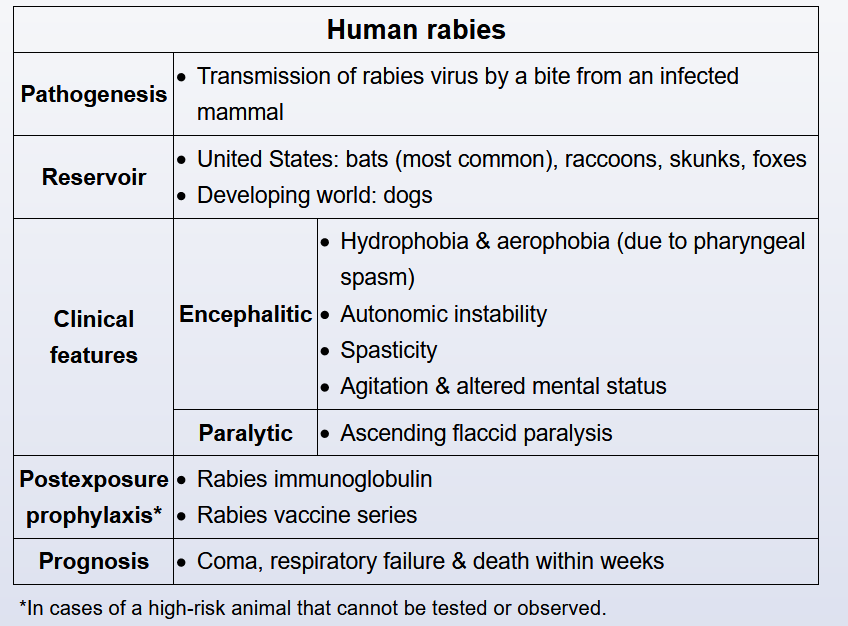Rabies
- cause: bite from mammal (bats, cave exposure; dogs, raccoons)
- sx: hydrophobia (afraid of drinking water), neurologic
- rx: post exposure prophylaxis
- prognosis: Post-exposure prophylaxis is effective only in preventing disease prior to manifestation of symptoms. After disease onset, treatment is primarily palliative, and most patients suffer from coma and death within weeks of illness onset. Family members should be advised to expect long-term neurologic deficits in the rare chance that the patient does survive.

This patient’s dysphagia, drool, and history of cave exposure are concerning for rabies transmitted by bats. Hydrophobia is pathognomonic for rabies; water triggers pharyngeal spasms that cause the patient to be frightened of drinking. The illness usually starts with a few days of nonspecific prodromal symptoms, including fever and malaise. Neurologic symptoms (eg, confusion, lethargy, paralysis, aphasia) develop later in the course of the disease.
In developing countries, domestic animals (eg, dogs) are common sources of infection. In the United States, bats and wild animals (eg, raccoons) are the most common reservoirs of infection. The acquisition of rabies from bats can occur from an unrecognized bite or a scratch, and possibly by inhalation of aerosolized viral particles. Bats are found in all states, and spelunking (cave exploration) is a risk factor for rabies acquisition from bats.